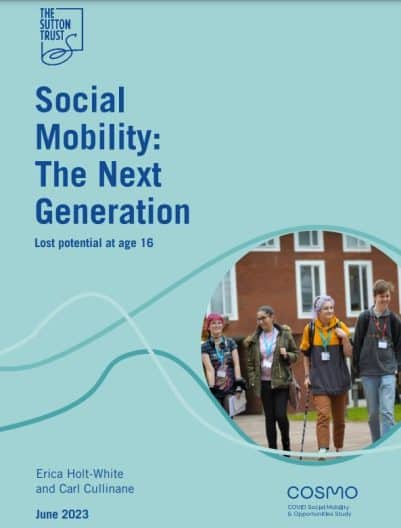What are the characteristics of disadvantaged high attainers?
- Disadvantaged high attainers are less likely to be White (62%), than average (75%) and other high attainers (79%). Among them, the number of Black African and Bangladeshi pupils is more than double their proportion in the population.
- They are also concentrated in London, with 25% attending school in the capital, compared to 14% of other high attainers. More advantaged high attainers are most likely to attend school in the wider South East. Just 5% of disadvantaged high attainers attend grammar schools, compared to 13% of other high attainers.
- 16% of disadvantaged high attainers are a young carer – 11 percentage points more likely than other high attainers (5%). They are less than half as likely to have a parent with a degree, and four times more likely to live in a single-parent household compared to other high attainers.
- Disadvantaged high attainers tend to be eligible for Free School Meals (FSM) for less of their school time than other FSM students, highlighting the impact of persistent disadvantage on grades.
How do disadvantaged high attainers progress at secondary school?
- Disadvantaged high attainers had GCSE grades on average more than three quarters of a grade lower per subject than the grades of other high attainers, a full grade lower than those from the most affluent backgrounds, and are almost twice as likely to drop out of the top third of attainment at GCSE.
- 62% of non-disadvantaged high attainers got five or more grade 7-9s at GCSE in 2021, compared to 40% of disadvantaged high attainers. If the disadvantaged group progressed at the same rate as their peers, there would have been almost 7,000 more achieving top grades. Over five years, this amounts to over 28,000.
- Looking at Progress 8, a measure of progress made between primary school and GCSEs, disadvantaged high attainers make less progress than the average student (a third of a grade per subject), and score more similarly to other Free School Meal students (half a grade less than average), compared to other high attainers, who progress a third of a grade higher than average. There was a slight widening of this gap in 2020 and 2021 in comparison to previous years.
- Within the disadvantaged high attainer group, those most likely to fall behind at GCSE included boys, White and Black Caribbean pupils, those with Special Educational Needs, and pupils in the North East.
- In Year 12, disadvantaged high attainers were nearly twice as likely to be at a Further Education college (12%) compared to other high attainers (7%).
Experiences and attitudes
- Despite their high grades, 21% of disadvantaged high attainers agreed with the statement ‘people like me don’t have much of a chance in life’, more than double the figure of other high attainers saying the same (10%).
- Disadvantaged high attainers were over three times more likely to lack a suitable device to study at the beginning of the pandemic, and twice as likely to lack a suitable place to study.
- They were less than half as likely to receive private tutoring compared to other high attainers, but more likely to receive catch-up tutoring at school – 26%, compared to 18% of other high attainers. Though this was less than other FSM pupils (34%).
- 37% of disadvantaged high attainers feel they have fallen behind their classmates as a result of the pandemic’s disruption, compared to 22% of other high attainers.
- When asked about what they are most likely to be doing in two years’ time, disadvantaged high attainers were 10 percentage points less likely to report that they think they will be studying compared to other high attainers, at 65% and 75% respectively. The figure for private school students of any attainment level is 85%.
